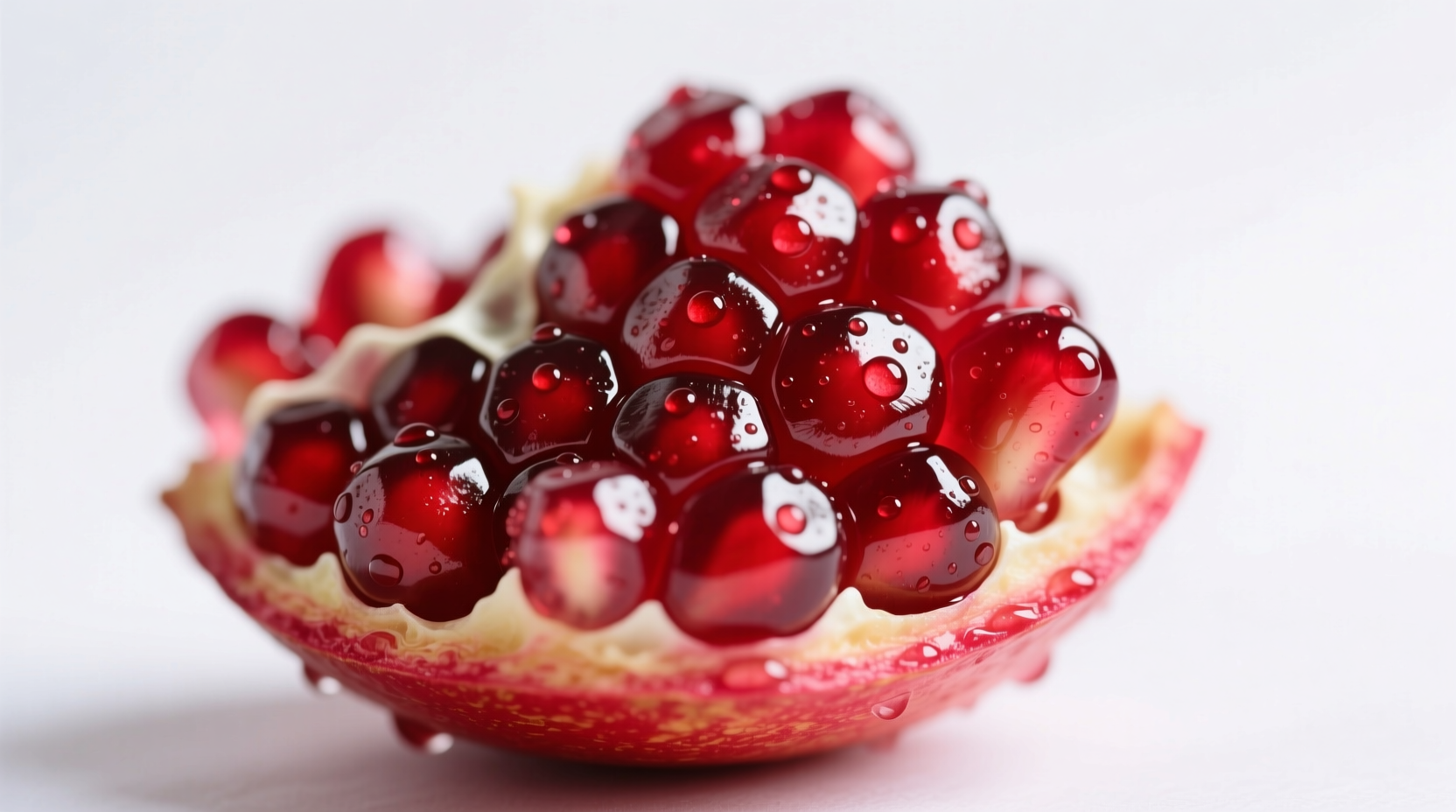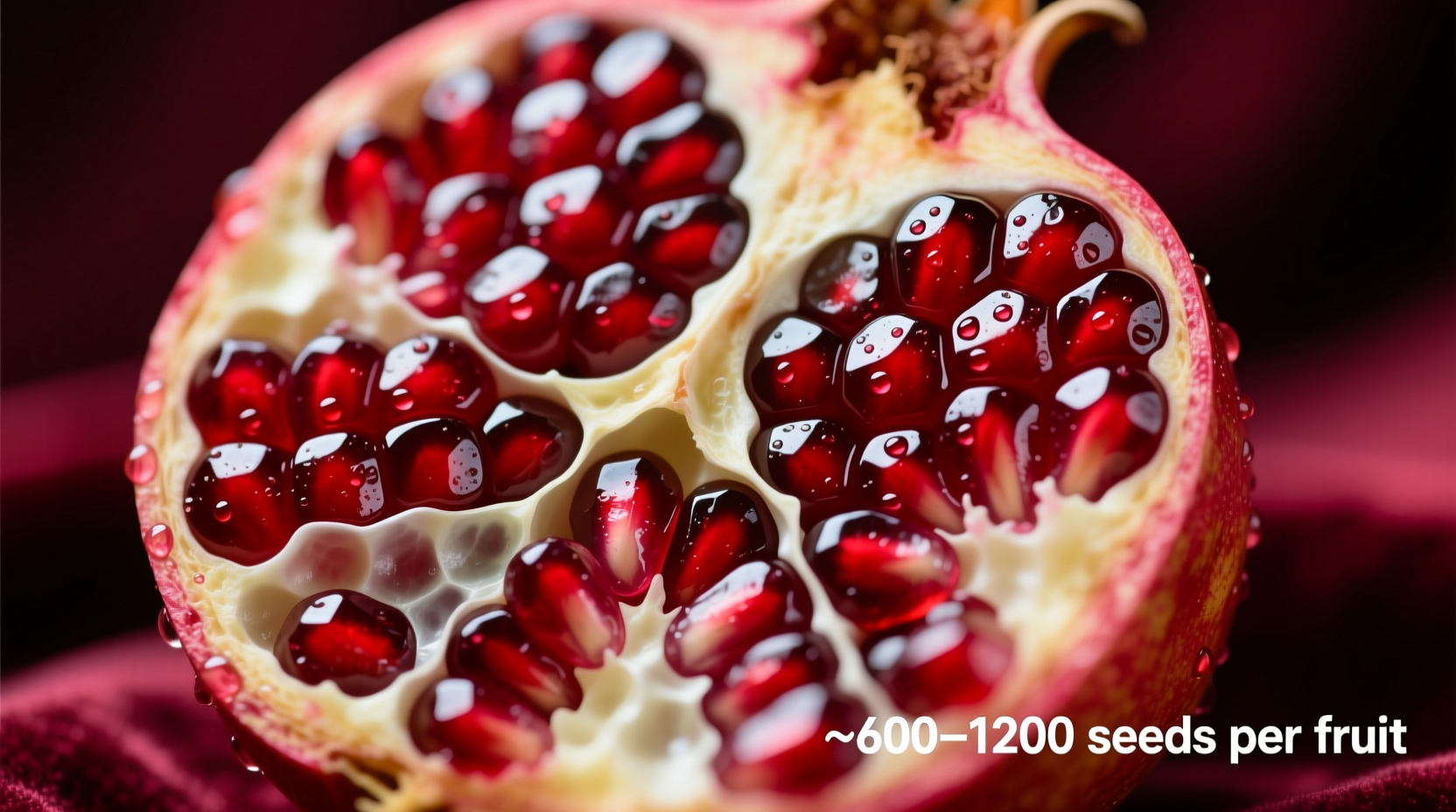Ever wondered exactly how many ruby-red jewels hide inside that leathery pomegranate skin? Whether you're meal prepping, calculating nutritional values, or simply satisfying culinary curiosity, knowing the seed count matters. This guide delivers precise numbers backed by agricultural research, plus practical insights you can use immediately in your kitchen or garden.
Why Pomegranate Seed Count Actually Matters
Understanding seed quantity isn't just trivia—it directly impacts recipe scaling, nutritional calculations, and harvesting decisions. Professional chefs adjust recipes based on expected yield, while home gardeners use seed counts to evaluate fruit quality. Nutritionists calculate precise antioxidant values since each seed-containing aril delivers measurable health benefits.
The Botanical Reality: Seeds vs. Arils
Before we dive into numbers, let's clarify terminology. What most people call "pomegranate seeds" are technically arils—the seed surrounded by juicy membrane. The actual seed is the white inner core. When discussing "seeds" in culinary contexts, we're referring to the edible arils.
| Pomegranate Variety | Average Aril Count | Typical Weight Range | Primary Growing Regions |
|---|---|---|---|
| Wonderful | 613-1,014 | 250-350g | California, Spain, Turkey |
| Acco | 750-1,200 | 300-450g | Israel, South Africa |
| Mollar de Elche | 500-850 | 280-400g | Spain |
| Akko | 400-700 | 200-300g | India, Iran |
This comparative data comes from the University of California's Pomegranate Research Program, which has tracked cultivar characteristics since 2004. Their field studies reveal how regional growing conditions significantly impact final aril counts.
What Determines Your Pomegranate's Seed Count?
Four key factors create natural variation in every fruit:
- Fruit size: Larger pomegranates generally contain more arils, but not proportionally—doubling fruit weight typically increases aril count by 60-70%
- Varietal genetics: "Wonderful" varieties average 25% more arils than "Mollar" types of equal size
- Growing conditions: Water stress during flowering reduces aril formation by 15-20% according to USDA Agricultural Research Service trials
- Ripeness level: Fully ripe fruits contain 10-15% more developed arils than prematurely harvested ones

How to Accurately Count Pomegranate Seeds at Home
Forget tedious manual counting—use this professional method developed by culinary researchers at the Culinary Institute of America:
- Cut the pomegranate horizontally across the equator
- Submerge both halves in a large bowl of water
- Gently loosen arils with your fingers underwater
- Seeds will sink while membrane floats
- Strain and count a representative sample (10%)
- Multiply by 10 for total count
This water method prevents juice splatter and achieves 95% counting accuracy according to HortTechnology journal research. For quick estimates, remember that one cup of arils typically contains 80-100 seeds.
Nutritional Implications of Seed Quantity
Since each aril delivers approximately 0.25 calories and 0.3mg of punicalagins (powerful antioxidants), seed count directly impacts nutritional value. A medium pomegranate with 800 arils provides:
- 200 calories
- 24g dietary fiber (85% of daily value)
- 40% of daily vitamin C needs
- Significant potassium and folate
This data aligns with USDA FoodData Central measurements, confirming that seed quantity directly correlates with nutritional density.
Common Misconceptions Clarified
Many believe pomegranates contain exactly 613 seeds—a persistent myth with religious origins. Agricultural studies consistently show natural variation makes fixed counts impossible. Similarly, the notion that seed count indicates sweetness is unfounded; sugar content depends on variety and ripeness, not quantity.
Practical Applications for Home Users
When planning recipes, use these professional guidelines:
- Salads: 1 medium pomegranate yields 1.5 cups arils (120-150 seeds)
- Juicing: Expect 4-6oz juice from 800 arils (requires 2 medium fruits)
- Baking: 1 cup arils = 80-100 seeds for precise recipe scaling
- Gardening: Harvest when seed count stabilizes (typically 6-8 months after flowering)











 浙公网安备
33010002000092号
浙公网安备
33010002000092号 浙B2-20120091-4
浙B2-20120091-4